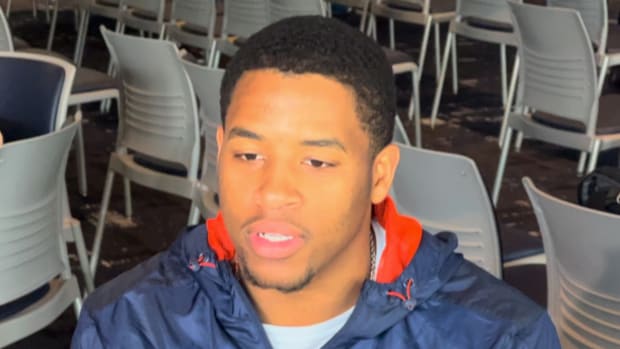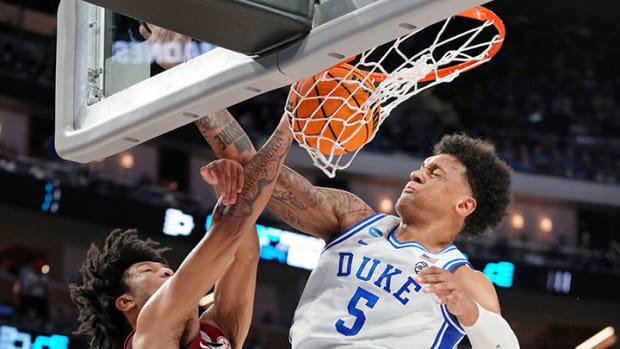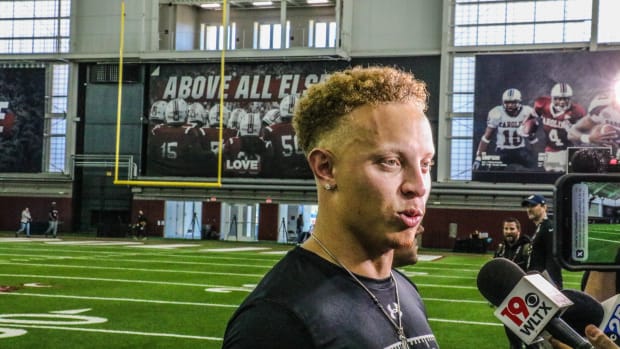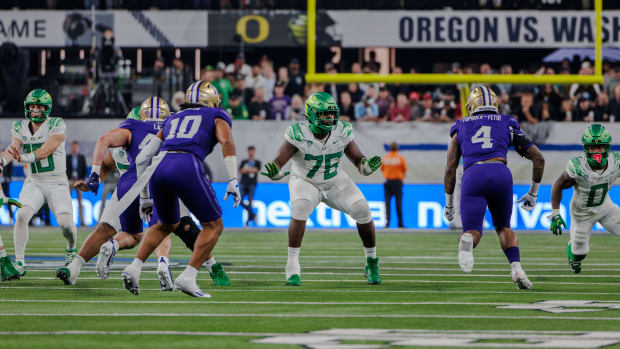Has conference realignment at last reached a lull?
Welcome to the Atlantic coast, Louisville.
Time to get to know the Great Lakes, Maryland and Rutgers.
Meet your new neighbors, schools of the American Athletic Conference. The footprint of the former Big East now covers nine states, from Connecticut to Texas.
The change in league memberships has dominated college sports the last decade as much as the chase for national championships, with power conferences competing for multimedia revenue and recruiting exposure and the dominoes that fall in line behind them.
As of Tuesday, 12 more football teams in the NCAA's bowl subdivision will have new affiliations. The American replaces Louisville (Atlantic Coast) and Rutgers (Big Ten) with Conference USA-departing East Carolina, Tulane and Tulsa. Maryland, a 1953 ACC original, bolts for the Big Ten.
Of the 128 schools to play at the FBS level this season, more than 40 percent have made at least one move over the past decade. That figure doesn't even include the shake-ups of the mid-to-late 1990s that produced the Big 12, Conference USA and the Mountain West. Flip the calendar back 25 years and find only 48 teams that have stayed put. That means more than 62 percent of them switched during that span.
There aren't other major moves on the immediate horizon, though. Might this mean administrators, coaches, athletes and fans can finally take a deep breath and start getting used to the new landscape?
''Hopefully, we're starting one of those periods where we're all intact and can reach our full potential,'' ACC Commissioner John Swofford said.
Legal and practical reasons point to a lull. NCAA revenue sharing rights and the pay-for-play debate are the current attention-getters. All five major leagues - the Atlantic Coast, Big Ten, Big 12, Pac-12 and Southeastern conferences - have long-term television contracts in place. These ''grant of rights'' agreements generally prevent further departures and make additions that force revenue division into smaller shares less attractive.
The court fight between the ACC and Maryland offers another discouragement of destabilization. After the ACC filed a lawsuit over Maryland's requirement to pay the full exit fee of approximately $52 million, Maryland filed a $157 million counterclaim against the league.
''Change is never easy. But I think over time people will accept it, and everything will level and even out,'' said former Minnesota athletic director Joel Maturi, who was a part of planning for the 2011 addition of Nebraska to the Big Ten that touched off the last big boom.
Four of the five second-tier FBS conferences - the American, Conference USA, Mid-American, Mountain West and Sun Belt - will play with odd numbers in 2014 and thus leave one or more teams out of league play every weekend all season.
And consider this quirk of a 14-team Big Ten: Minnesota opened TCF Bank Stadium on campus in 2009, and Indiana will make its first visit there in ... 2018. The Gophers will have played Middle Tennessee State, New Mexico State and San Jose State twice each at their new home before hosting the Hoosiers once. Minnesota's visit to Indiana in 2013 was the only one scheduled in a 12-season span.
The big winner in this, though, could be Louisville. The Cardinals have developed a top-tier football team to accompany the basketball powerhouse, and they'll introduce their flourishing programs and sparkling venues to the ACC this fall.
''It's just been remarkable what has been accomplished there. You couldn't help but pay attention to what was happening at Louisville,'' said Swofford, whose league now spans from Florida to Massachusetts, with more television households and total population than any other conference in the country.
With television at the heart of the matter, stability is never permanent. The industry of college sports is no different from the market-driven society in which it exists.
''To strive and thrive, you've got to get bigger. Conference realignment is about exactly that: having more economic value when you get bigger,'' said Chris Bevilacqua, a sports media consultant. ''It's not going to stop, because the market forces are going to continue to incentivize and reward size. It's not just college. It's everything in the ecosystem. So will it settle down and pause for a while? My guess is probably. Will there be further consolidation and realignment? I think most definitely. When will that happen? That's hard to say.''
---
AP Sports Writer Aaron Beard in Raleigh, North Carolina, contributed to this report.




